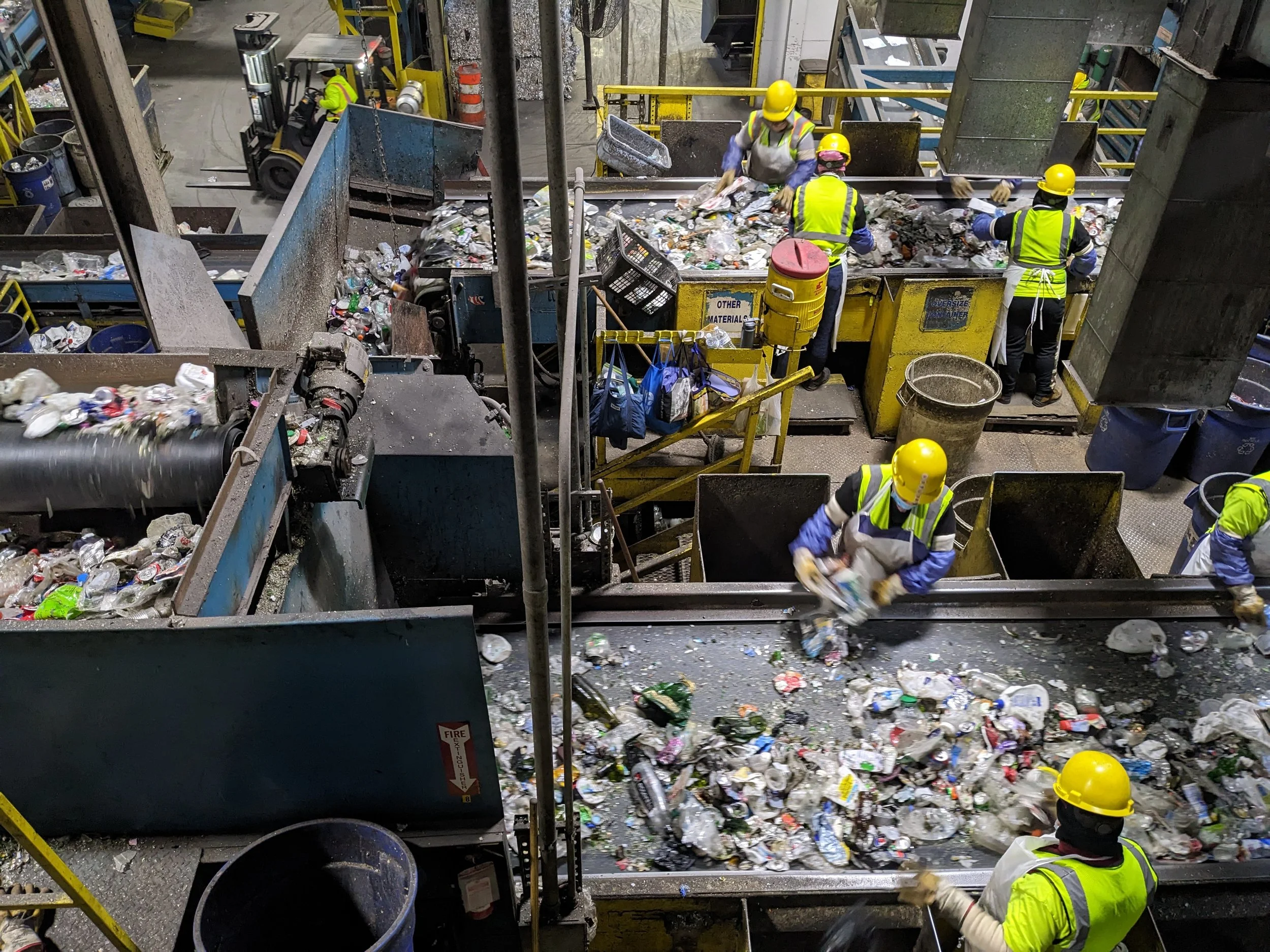
Learn the Facts.
Mechanical Recycling.
What is “true” recycling?
True recycling is the process of returning a discarded material back into its original form. For example, paper back into paper, aluminum cans into aluminum cans, a plastic beverage bottle into a new plastic beverage bottle, etc.
For some materials, this recycling process works decently well, especially where recovery or collection rates of materials is high. While for others—chiefly, plastic—recycling is 1. not so successful, 2. not so profitable, and 3. not a solution to our pollution problem.
How many times can this material really be “recycled”?
One of the marketing lies perpetuated by Recycling Industry (because it is an industry, with businesses seeking to make a profit) is that recycling is the silver bullet solution to pollution. In practice, this has morphed into a widespread belief that nearly everything is recyclable. This misinformed belief has considerable downstream consequences, not least of which includes wish-cycling (or wishful recycling) of items that are not recyclable, contributing to contamination of true recycling streams. Ultimately, these issues compound, adding excess burden to the U.S.’s solid waste management and recycling infrastructure which is already stretched thin, and making true recycling less and less profitable.
Speaking of true recycling, there are several materials that are highly recyclable. Responsible production, disposal, collection, and recycling of these materials contribute to a circular economy—which is a good things because it lessens our reliance on single-use items. Some of these materials include:
Glass:
Glass can be recycled an infinite number of times.
In the wake of curbside recycling collection cuts, glass—a heavy material to haul—is often one of the first materials to stop being collected. However, glass packaging has the potential to be one of the most circular packaging material streams. When collected, it is easily cleaned, sorted (often by color), crushed, and recycled through melting and reforming.
Did you know? States and places with bottle bills (a.k.a. recycling refund or container deposit laws) in place have significantly higher beverage container—including glass—recycling rates. What’s more, that glass is cleaner and already collected in bulk, which means a more efficient transportation and recycling process.
Steel and Aluminum (and other metals):
Aluminum cans can be recycled an infinite number of times.
According to Earth911, “An aluminum can is generally turned into a new can and back on store shelves within 60 day[s], saving as much as 95% of the energy necessary to make a can from virgin aluminum.” Similar to glass, states with bottle bills demonstrate collection rates as high as 80-95% for aluminum cans, which in turn leads to higher recycling rates.
However, recent reporting has highlighted that the national aluminum recycling rate has dropped to 43%, likely due to an aging infrastructure and lingering effects from Operation National Sword which burdened many curbside collection programs across the country. Still, Americans are leaving money on the table by throwing aluminum cans into the landfill.
Other metals, both ferrous and non-ferrous, also have an unlimited lifespan and should be recycled.
Paper:
Paper has a limited recycling lifespan.
Some estimates suggest typical printer paper can be recycled 5-7 times before the quality is too diminished. Paper is comprised of long fibers, which are shortened each time the material is recycled. But once these fibers are too short, they can still be recycled into newsprint or pulp products such as egg cartons and packaging inserts.
Did you know? In 2023, the paper recycling rate was 65% - 69%, totaling to an estimated 46 million tons of paper. The cardboard recycling rate was 71% - 76%, nearly 33 million tons of cardboard. According to The American Forest & Paper Association, “Nearly half of recycled paper went into making containerboard — the material used to make cardboard boxes.”
The problem with plastic.
Varied materials = complicated process.
Most plastic is designed with specific uses in mind. This leads to chemical additives and treatments to achieve desirable qualities (like rigidity, flexibility, color, heat resistance, sterility, etc.) during the production process. However, disposal is not usually considered in the design and development of these products—many of which are single-use. Thus, plastic is not designed to be recycled.
Did you know? Plastic is a petroleum product. That means, plastic is fundamentally made from fossil fuel feedstock + an array of chemical additives.
Did you know? There are many, many types of plastic. The plastic #1-7 only capture a fraction of the types of material on the market and in circulation today. Moreover, these numbers (called “resin identification codes”) indicate what type of plastic is used to make a product, they do not indicate recyclability.
A note on plastic in the news: Plastic recycling has been a hot topic of late, and thus the internet is full of many reports, articles, and opinion pieces that present several perspectives on the state of plastic and plastic recycling in the U.S., including the barriers and opportunities to get recycle, down-cycle, export, burn, or otherwise dispose of the material. Be aware that some of these resources may come from third-parties, scientists, research organizations, federal agencies, or plastic manufacturers and recyclers.
How it Works
Disposal and Collection
Begins with curbside collection or residential drop-off of recyclables.
Materials Recovery Facility (MRF)
Recyclables are delivered to the MRF.Sorting and Baling
At the MRF, materials are sorted and baled to be sold to market. The market for different materials is variable and highly influences what MRFs will/won’t accept.Sold to Recyclers
Materials from the MRF are sold to re-processors or recyclers, which turn the material into new products.Recycled Products
Products are made from recycled material. Oftentimes with plastic, this is down-cycling (meaning the product is not returned to its original form, but becomes something else. Such as plastic water bottles into composite decking).Repeat
Image credit: Clean Fairfax.













